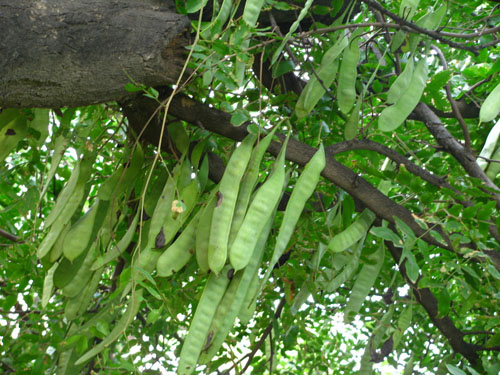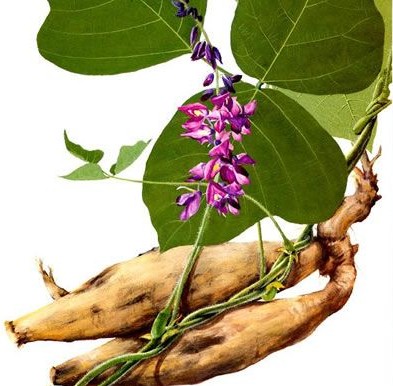- Liliaceae
- Lamiaceae
- Euphorbiaceae
- Leguminosae
- Zingiberaceae
- Chloranthaceae
- Campanulaceae
- Asteraceae
- Acanthaceae
- Orchidaceae
- Polygonaceae
- Ranunculaceae
- Vitaceae
- Rubiaceae
- Solanaceae
- Thymelaeaceae
- Saururaceae
- Moraceae
- Polypodiaceae
- Myrtaceae
- Araceae
- Adiantaceae
- Schisandraceae
- Amaranthaceae
- Berberidaceae
- Araliaceae
- Taxaceae
- Cucurbitaceae
- Apiaceae
- Guttiferae
- Scrophulariaceae
- Papilionaceae
- Caprifoliaceae
- Elaeagnaceae
- Apocynaceae
- Brassicaceae
- Papaveraceae
- Gentianaceae
- Paeoniaceae
- Lauraceae
- Punicaceae
- Nyssaceae
- Ephedraceae
- Gnetaceae
- Polygalaceae
- Violaceae
- Ginkgoaceae
- Cupressaceae
- Dipsacaceae
- Eucommiaceae
- Juglandaceae
- Dryopteridaceae
- Rosaceae
- Huperziaceae
- Caryophyllaceae
- Rhamnaceae

Gleditsia sinensis Lam.
- Introduction
- Download
Blast
Gleditsia sinensis Lam. is a leguminous tree native to China. It has high economic, medicinal, and ecological value, and it has been used as a detergent in China for thousands of years. In Chinese traditional medicine, the thorns of G. sinensis are used for the treatment of inflammatory diseases, including swelling, suppuration, carbuncle, and skin diseases. G. sinensis can survive in arid regions and is tolerant to extreme temperature conditions.
Year: 2014
Institution: Institute of System Biology, Shanghai University, Shanghai 200444, China
Material: Jiangsu, China
Download: http://www.herbal-genome.cn/index.php?m=content&c=index&a=show&catid=100&id=127

Spatholobus suberectus Dunn
- Introduction
- Download
Blast
Spatholobus suberectus (Chinese name Ji Xue Teng), is a common traditional Chinese herb applied in cancer treatment. Chinese Medicine considers cancer as a kind of disease with severe blood stasis. Therefore the promotion of blood circulation and oxygen supply is an important strategy for cancer therapy.
Year:2016
Institution:South China Botanical Garden, Chinese Academy of Sciences
Yunnan Agricultural University
Material: Guangzhou, China
Data link: http://www.herbal-genome.cn/index.php?m=content&c=index&a=show&catid=100&id=21

Sophora tonkinensis Gagnep
- Introduction
- Download
Blast
Sophora tonkinensis (Leguminosae) is an important traditional Chinese herbal plant, namely Shan-Dou-Gen in Chinese. Its roots and rhizomes were used for the treatment of acute pharyngolaryngeal infections and sore throats. Phytochemical investigations have revealed that the plant accumulated lupin alkaloids and flavones as its main constituents. Cytisine-type alkaloids are a class of natural occurring lupin alkaloids that exhibit partial agonist activity toward neuronal nicotinic acetylcholine receptors with specificity for the α4β2 subtype.
Year:2016
Institution:South China Botanical Garden, Chinese Academy of Sciences
Yunnan Agricultural University
Material: Guangzhou, China
Data link: http://www.herbal-genome.cn/index.php?m=content&c=index&a=show&catid=100&id=22

Glycyrrhiza uralensis
- Introduction
- Download
Blast
Glycyrrhiza uralensis, also known as Chinese liquorice, is a flowering plant native to Asia, which is used in traditional Chinese medicine.As well as traditional Chinese medicine, liquorice root is used in Greco-Arab and Unani medicines, as well as in the traditional medicines of Mongolia, Japan, Korea, Vietnam, Pakistan, India and other Asian nations. People with heart conditions or high blood pressure should avoid ingesting extensive amounts of liquorice, as it can further heighten blood pressure and lead to stroke.
1
Year:2013
Institution:RIKEN Center for Life Science Technologies (Division of Genomic Technologies), RIKEN Yokohama Institute
Material: Hei longjiang, China
2
Year:2015
Institution:State Key Laboratory of Tree Genetics and Breeding, The Research Institute of Forestry, Chinese Academy of Forestry, Centre for Comparative Genomics, Murdoch University
Material: Beijing, China
Data link: http://www.herbal-genome.cn/index.php?m=content&c=index&a=show&catid=100&id=23

Pueraria lobata
- Introduction
- Download
Blast
Pueraria lobata, a member of the Leguminosae family, is a traditional Chinese herb which has been used since ancient times. P. lobata root has extensive clinical usages, because it contains a rich source of isoflavones, including daidzin and puerarin. P. lobata roots have been widely used for the medical treatments of alcohol-induced hangover, alcoholism, circulatory problems, and chest pains.
Year:2015
Institution:CAS Key Laboratory of Plant Germplasm Enhancement and Specialty Agriculture, Wuhan Botanical Garden, Chinese Academy of Sciences
Material: Wuhan, China
Data link: http://www.herbal-genome.cn/index.php?m=content&c=index&a=show&catid=100&id=24

Cassia angustifolia Vah L.
- Introduction
- Download
Blast
Senna (Cassia angustifolia Vahl. is synonymous with Senna alexandria Mill.), popular as “Tirunelveli senna” is used worldwide as natural laxative. The drug senna is mentioned in various texts of indigenous systems of medicine (Ayurveda, Siddha Unani and Homoeopathy) in India, pharmacopeias of United States, United Kingdom, Germany, and other counties
Year:2015
Institution:ICAR-Directorate of Medicinal and Aromatic Plants Research (DMAPR), Anand, Gujarat, India
Material: Anand, Gujarat
Data link: http://www.herbal-genome.cn/index.php?m=content&c=index&a=show&catid=100&id=25

Astragalus membranaceus
- Introduction
- Download
Blast
Astragalus membranaceus Bge. var. mongolicus (Bge.) Hsiao (A. mongolicus) is a perennial herbaceous plant that belongs to the legume family. The dried root of this plant, known as "Huangqi", is one of the most commonly used traditional Chinese herbs.Among many secondary metabolites it produces, the effective bioactive constituents include isoflavonoids and triterpene saponins.
Year:2015
Institution:Ministry of Education Key Laboratory for Biodiversity Science and Ecological Engineering, School of Life Sciences, Fudan University, Shanghai
Material: -
Data link: http://www.herbal-genome.cn/index.php?m=content&c=index&a=show&catid=100&id=26